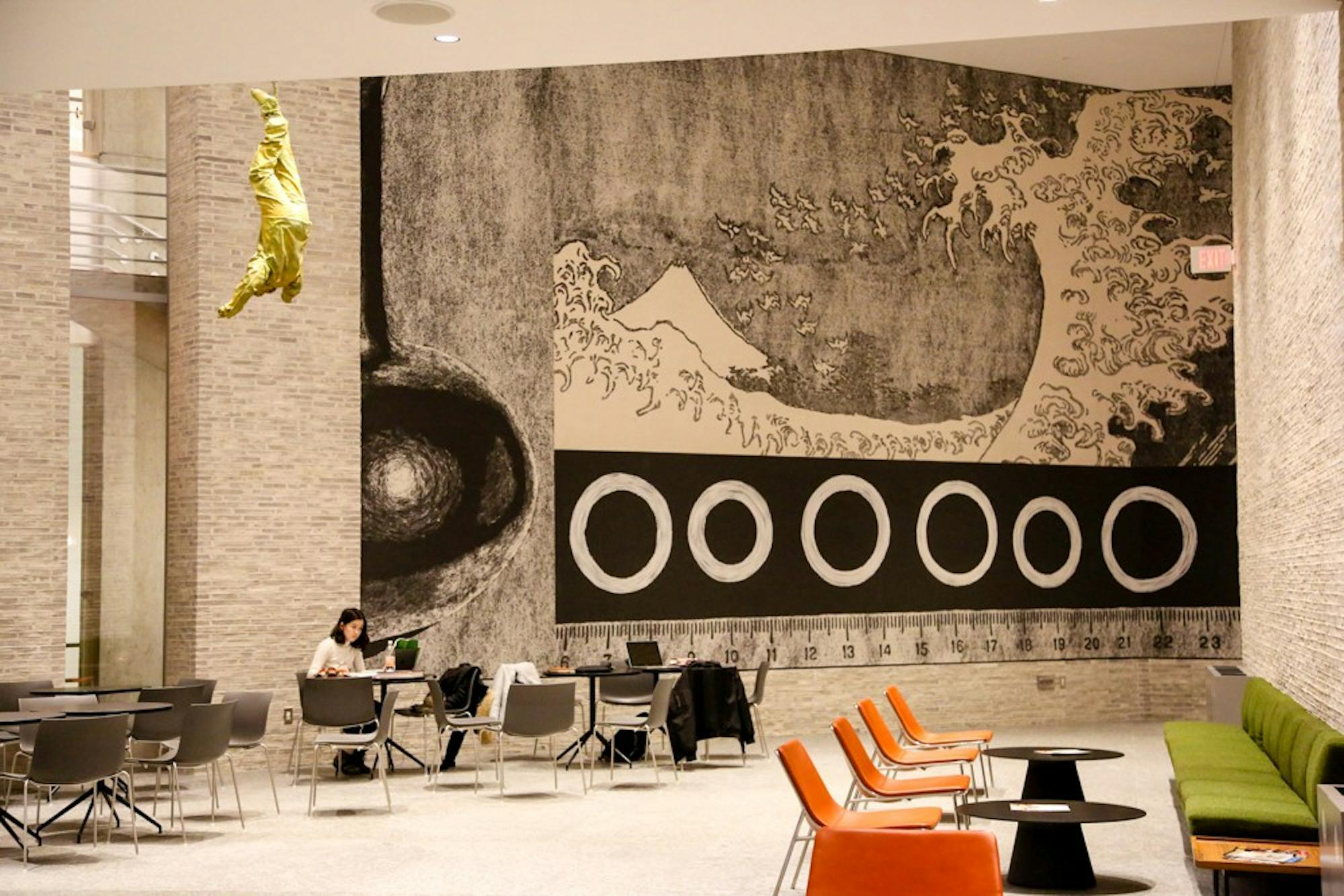With its recent acquisition of ten pieces from the Souls Grown Deep Foundation, the Hood Museum of Art has expanded its collection of American artwork highlighting African American artists from the southern United States.
The new pieces include painting, sculpture, quilt and mixed-media works from eight different artists.
Hood director John Stomberg expressed excitement about the acquisition.
“Here at the Hood, for example, we have long been interested in art by multiple sources, art from multiple sources — not just New York, not just trained — but this is a real bold step for us,” Stomberg said. “The goal is to do a social good and also to change art history with these sales.”
The Souls Grown Deep Foundation, founded over a decade ago by art historian William Arnett, boasts the largest collection of works by southern U.S.-based Black artists. Through grants, the foundation invests in artists’ communities, aiming to support educational initiatives, economic empowerment and racial and social justice.
Arnett initially founded the Souls Grown Deep Foundation as a way to share his personal art collection. The Foundation’s mission is to incorporate a higher number of Black, southern artists in the American art canon, according to its website.
Stomberg described the new acquisitions as representative of a “direct and urgent form of art” and mentioned that the museum will not separate the works, but instead integrate them into the larger collection.
Hood curatorial research associate of African art Alexandra Thomas agreed with Stomberg about the significance of these works.
“It is really important to highlight the kind of philosophy of what Souls Grown Deep Foundation is because the works… [highlight] a really deep tradition of African American artists in the U.S. South making art that has been erased from a lot of modern art history,” Thomas said.
In acquiring the new pieces, the Hood joins a prestigious group of institutions that have worked with the Souls Grown Deep Foundation, including The Metropolitan Museum of Art, the Fine Arts Museums of San Francisco, the Philadelphia Museum of Art and the Museum of Fine Arts in Boston.
“We feel pretty fortunate at the Hood Museum to be on that list and to have gotten such a wide range of work from a number of different artists and in a range of different media, too,” said Hood curator of academic programming Amelia Kahl ’01.
According to Kahl, works acquired by the Hood include paintings, assemblage, a sculpture and a rare Gee’s Bend quilt.
Despite the differences among their works, Thomas said, the artists are all influenced by certain common traditions and practices.
“These are African American artists who are also kind of directly inheriting certain African art traditions, too,” Thomas said. “The idea of assemblage is very central to Western and Central African art practices. The Gee’s Bend quilts, for example — a lot of [the artists] are living on former plantations where their ancestors were enslaved, so there is a direct connection from Africa and slavery to these artworks.”
Thomas explained that assemblage and bricolage, techniques used in these works, involve using readily available items and using them as materials to create something new.
Malia Chung-Paulson ’24, along with other attendees of the event, had the chance to view part of the acquisition at the Hood’s reopening celebration this past weekend. Information about the collection and the Souls Grown Deep Foundation accompanies the three works by Thornton Dial currently on display.
“I think that there is really something to be said about the artists using everything and making everything out of it,” Chung-Paulson said. “That’s art in and of itself, regardless of the medium or the story that you are trying to tell.”
Elizabeth Li ’25 shared this respect for the artists’ innovation. She said that she immediately noticed the use of unconventional materials in Thornton Dial’s Heaven and Hell on Earth, one of the paintings on display.
“Art stems from our daily lives, so it is really cool to have these common, everyday objects presented in a different way to evoke a feeling that is greater than their normal use in life,” Li said.
Both Thomas and Kahl emphasized the commonalities of these pieces.
“There [are] a lot of themes of resilience and resistance and ancestral memory,” Thomas said.
Kahl noted her appreciation for the artists’ resourcefulness and said she was excited about how the artwork reflected their backgrounds and experiences. She noted that she hopes the pieces acquired by the Hood will influence how viewers perceive and understand American art.
“Certainly, as a New England institution, this helps to broaden the story of contemporary art,” Kahl said. “And also — and this is to quote John Stomberg a little bit — the story of who is included in ‘American art.’”




